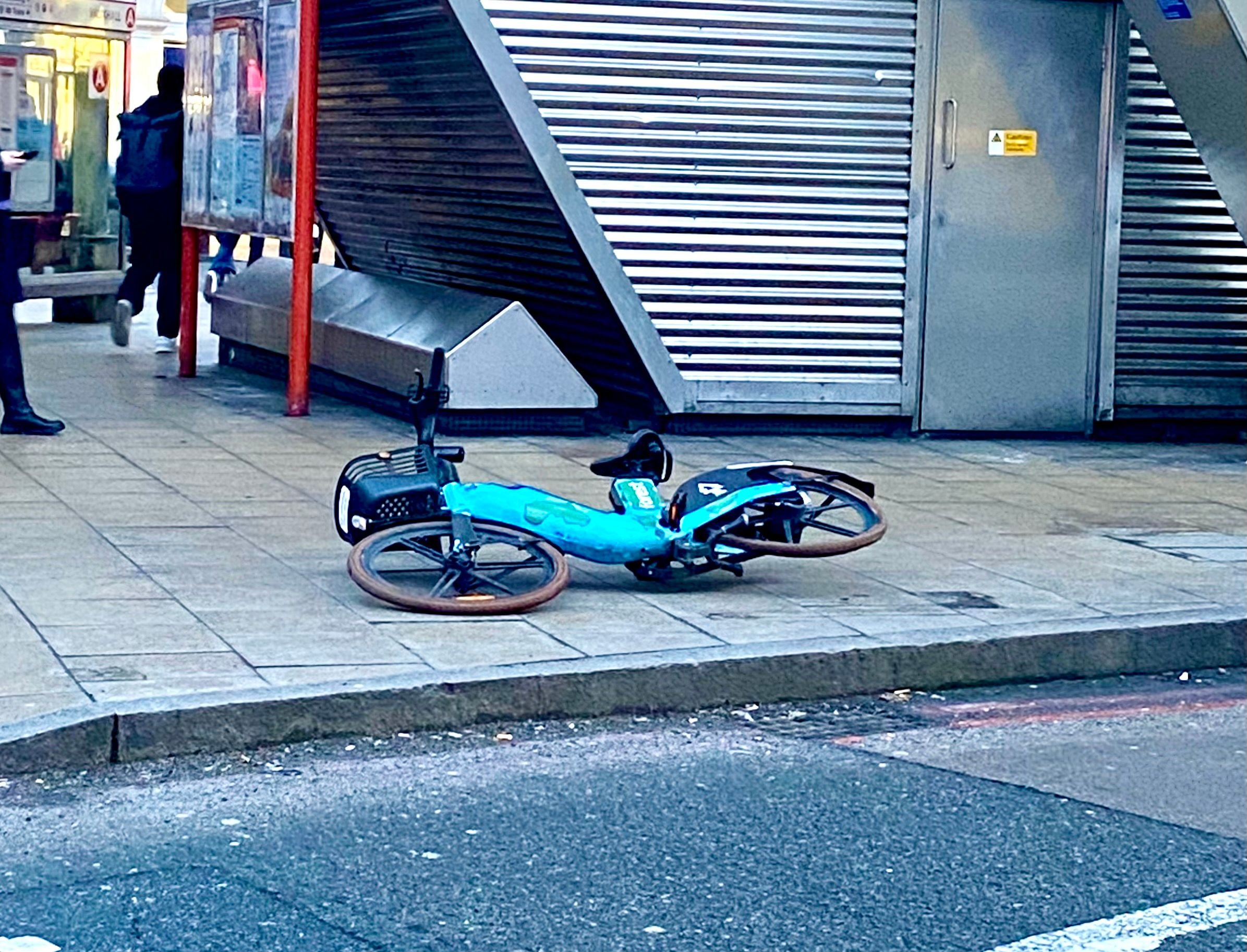Abandoned E-Scooters: Creating Barriers in Our Accessible Cities
Many of our cities embrace micro-mobility solutions like e-scooters, but as a result we're witnessing an unfortunate side effect: the thoughtless abandonment of these vehicles on our streets and sidewalks. While e-scooters offer a quick, cheap and eco-friendly transportation option, their improper disposal creates significant accessibility barriers for many members of our community.
Impact on Vulnerable Pedestrians
The random abandonment of e-scooters poses particular challenges for blind and visually impaired individuals. Many blind people navigate their local areas independently, using either a white cane or a guide dog. They rely on their learned knowledge of familiar routes and environments. When e-scooters are left strewn across sidewalks, they become unexpected obstacles that can disrupt these carefully memorized paths and potentially cause injury.
The elderly population is another vulnerable group significantly affected by this issue. With potentially reduced mobility and vision, abandoned e-scooters become dangerous tripping hazards that can lead to serious falls and injuries.
Wheelchair Users Face Additional Barriers
For wheelchair users, abandoned e-scooters can make paths completely impassable. When scooters block sidewalks or ramps, wheelchair users may be forced to take dangerous detours into the street or backtrack to find an accessible route. This not only inconveniences them but also puts their safety at risk.
Current Solutions and Their Limitations
Many local councils have begun implementing measures to address this issue:
Designated parking stations for e-scooters
Fines for improper parking
Clean-up teams that collect and redistribute abandoned vehicles
However, these solutions aren't comprehensive enough. Despite these measures, e-scooters continue to create obstacles in our urban spaces, particularly during peak commuting hours when riders often abandon them hastily on their way to work.
What Can We Do?
As community members, we all have a role to play in maintaining accessible streets:
If you're an e-scooter user:
Always park in designated areas
Never leave scooters blocking pathways or entrances
Take an extra moment to ensure your parking doesn't create obstacles
If you're a pedestrian who encounters abandoned e-scooters:
When safe to do so, consider moving them to a more appropriate location
Position them upright against walls or fences, away from main walking paths
Avoid placing them near corners where they might surprise pedestrians
Report consistently problematic areas to local authorities or e-scooter companies
Looking Forward
The solution to this accessibility crisis requires a combination of better infrastructure, stronger enforcement, and most importantly, increased awareness and consideration from e-scooter users. We all deserve clean, hazard-free streets that are accessible to everyone, regardless of their mobility needs or visual capabilities.
By being more mindful of how we park and handle e-scooters, we can help ensure our cities remain accessible to all members of our community. The convenience of e-scooter usage should never come at the cost of others' ability to navigate our shared urban spaces safely and independently.
Further information on the potential e-scooter hazards for blind people can be found on this RNIB press release.
If you've got ideas or comments on this blog, please let us know with the form below.


